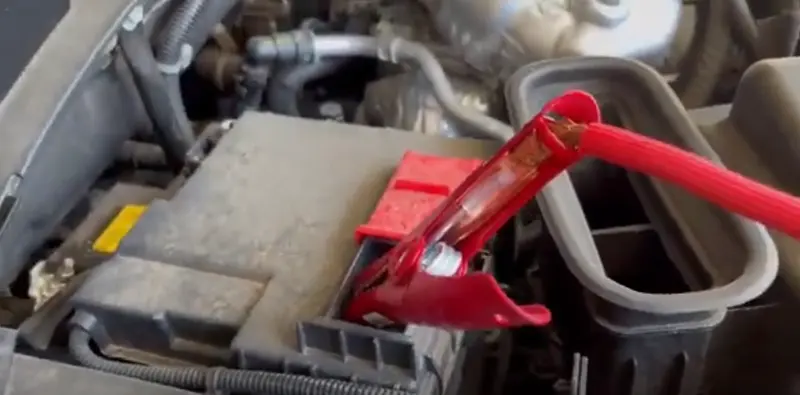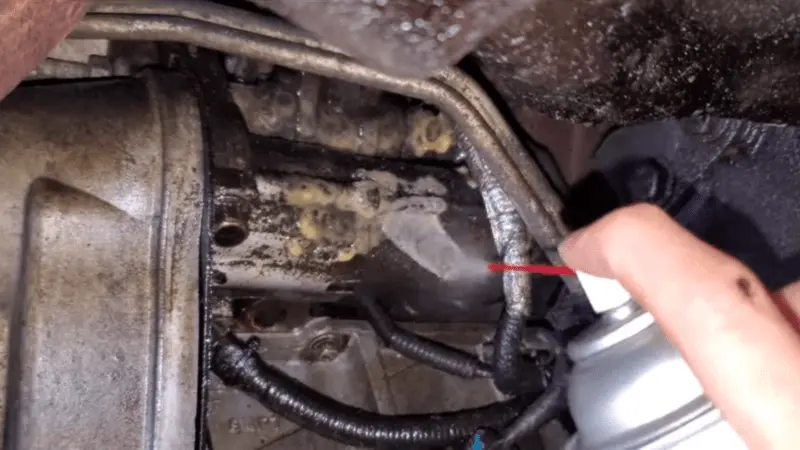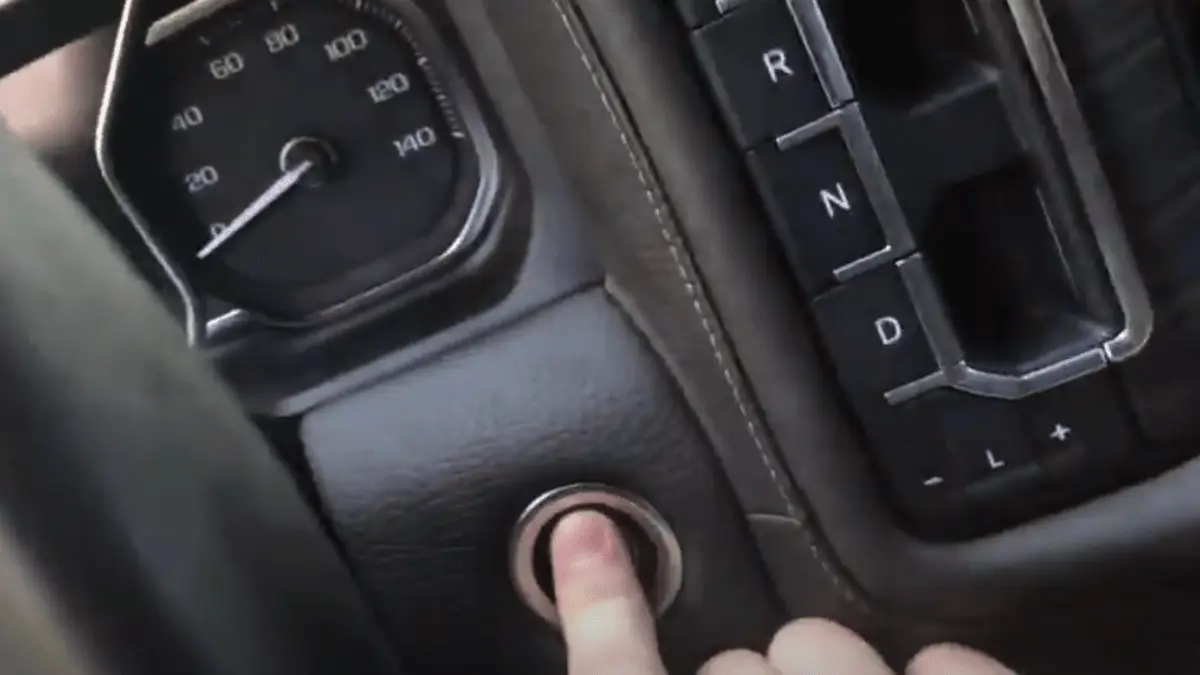The frustration of turning the key in your GMC Yukon only to be met with a persistent clicking noise can be disheartening. In this comprehensive blog post, we delve into the perplexing issue of “GMC Yukon Won’t Start Clicking Noise.” Whether you’re a seasoned Yukon owner or a new driver, understanding the potential causes behind this common problem is crucial.
From examining the battery and starter to exploring the intricacies of the starting control circuit, we guide you through six essential troubleshooting steps to unravel the mystery behind the clicking noise and ensure a swift resolution. Join us on this journey to diagnose and fix the GMC Yukon’s enigmatic no-start clicking issue.
Why My GMC Yukon Won’t Start Clicking Noise?

A clicking noise when attempting to start your GMC Yukon can be disconcerting and indicative of various underlying issues. Here are seven possible reasons why your Yukon won’t start and is accompanied by a clicking noise:
1. Bad Ground Connection:
A bad ground connection can disrupt the flow of electricity, preventing the starter motor from engaging properly. Check the ground cable connecting the battery to the chassis for corrosion or looseness. A secure and clean ground connection is vital for efficient electrical flow.
2. Bad Starter Motor:

The starter motor is responsible for initiating the engine’s crank. If the starter motor is faulty or failing, you may hear a clicking sound when attempting to start the Yukon. A thorough examination of the starter motor, including checking for wear, damaged wiring, or loose connections, is necessary.
3. Corroded Battery Terminals or Cables:
Corroded battery terminals or cables can impede the electrical connection between the battery and the starter. Inspect the battery terminals for corrosion and clean them using a wire brush. If the cables are damaged or excessively corroded, consider replacing them to ensure a secure connection.
4. Engine Failure:
Engine issues can lead to a clicking noise during startup attempts. Problems such as a seized engine, broken timing belt, or issues with internal components may prevent the engine from turning over. In such cases, professional diagnosis and repair are essential to address the root cause of the engine failure.
5. Inappropriate Battery Connection:
Incorrectly connecting the battery can result in a clicking noise. Ensure that the positive (red) and negative (black) terminals are properly connected. Reversed connections or loose terminals can disrupt the electrical circuit and cause a clicking sound. Double-check the battery connections before exploring other potential issues.
6. Weak Battery:
A weak or discharged battery is a common culprit for clicking noises during startup attempts. If the battery lacks sufficient charge, the starter motor may not receive the power needed to crank the engine. Use a multimeter to measure the battery voltage, and if it falls below the recommended level, consider recharging or replacing the battery.
7. Faulty Solenoid:
The solenoid is a critical component that facilitates the engagement of the starter motor. A faulty solenoid can result in a clicking sound. Inspect the solenoid for visible damage or wear, and consider testing its functionality. If the solenoid is the issue, replacing it may resolve the clicking noise during startup.
RELATED: GMC Sierra Won’t Start with No Click
How To Jump Start Your GMC Yukon: Step-by-Step

If you find your GMC Yukon with a dead battery, a jump start can be a quick solution to get back on the road. Follow these steps to safely jump-start your Yukon using jumper cables and a healthy battery from another vehicle or a battery booster:
- Prepare Both Vehicles: Ensure both vehicles are turned off and in the Park. Position them so that the batteries are within reach, but the cars are not touching.
- Connect Red Cable: For your Yukon, connect the red jumper cable to the positive terminal of the dead battery.
- Connect Red Cable to Donor Battery: Connect the other end of the red cable to the positive terminal of the donor vehicle’s healthy battery.
- Connect Black Cable: Attach the black jumper cable to the negative terminal of the donor vehicle’s battery.
- Connect Black Cable to Yukon: Safely connect the opposite end of the black cable to any unpainted metal part of your Yukon’s body or engine. Avoid the negative terminal of the dead battery to prevent sparks near potentially dangerous gases.
- Start Your Yukon: Start your Yukon. If the battery was the issue, your vehicle should start up.
- Remove Cables in Reverse: Once your Yukon is running, carefully remove the cables in reverse order: black cable from your Yukon, black cable from the donor vehicle, red cable from the donor vehicle, and finally, red cable from your Yukon.
How to Fix the “GMC Yukon Won’t Start Clicking Noise” Problem

If your GMC Yukon refuses to start and is accompanied by a clicking noise, identifying and addressing the issue is crucial for a quick resolution. Here are six ways to troubleshoot and fix the problem:
1. Inspect Battery, Terminals, and Cables:
The most common culprit for a clicking noise during startup is often a faulty or discharged battery. Begin by examining the battery terminals and cables for cleanliness and tightness. Utilize a digital multimeter to verify the battery charge, ensuring it has at least 12 volts. If the battery falls short, charge and load test it. Many auto parts stores offer free battery testing services.
2. Make Sure the Starter Solenoid Has Power:
If the battery, terminals, and wires are in good condition, focus on the starter solenoid. Check for power using a digital multimeter. If the solenoid lacks power but produces a clicking noise, the starting control circuit may be faulty. Concentrate on the circuit between the relay and the starter. If power is present, but the car won’t start, there may be a problem with the starter or an engine mechanical issue.
3. Starter Test:
Perform a starter test by checking the solenoid and motor, which are often integrated into one unit in modern vehicles. A starter bench test can effectively evaluate both components. Refer to the symptoms of a poor starting system to guide you through the testing process.
4. Check Engine Mechanical Issues:
If the previous checks don’t yield results, inspect for engine seizing. Attempt to turn the engine by hand using a breaker bar on the crankshaft pulley bolt. A seized engine indicates severe internal mechanical problems that require professional attention.
5. Examine Starting Control Circuit:
If the solenoid has power, but the car won’t start, focus on the starting control circuit. Check the circuit between the relay and the starter for any faults. The clicking noise suggests the relay is operating, but there may be issues within the circuit preventing the starter from engaging.
6. Professional Diagnostic Assistance:
If troubleshooting at this level doesn’t resolve the issue, consider seeking professional diagnostic assistance. Automotive technicians have specialized tools and expertise to identify and address complex electrical and mechanical problems accurately.
How Can I Check My Yukon’s Battery?

Checking your GMC Yukon’s battery is a straightforward process that involves a few key steps. Here’s a step-by-step guide:
1. Safety First:
Ensure the vehicle is turned off and the key is removed from the ignition. Put on safety gloves and protective eyewear to safeguard yourself from any potential battery acid contact.
2. Visual Inspection:
Start by visually inspecting the battery. Look for any signs of corrosion, especially around the terminals. Corrosion appears as a white, powdery substance. Clean off any corrosion using a wire brush.
3. Check Battery Connections:
Ensure the battery terminals are securely connected. If they’re loose, tighten them with a wrench. Loose connections can cause electrical issues.
4. Examine Battery Case:
Inspect the battery case for bulges, cracks, or other abnormalities. A swollen or damaged battery may be a sign of internal problems and should be replaced.
5. Check Battery Age:
Note the manufacturing date on the battery. Most batteries have a date code that indicates when they were manufactured. If the battery is more than three to four years old, consider having it tested, as batteries typically have a lifespan of around 3-5 years.
6. Measure Battery Voltage:
Use a multimeter to measure the battery voltage. Set the multimeter to DC volts and touch the positive lead to the positive battery terminal and the negative lead to the negative terminal. A fully charged battery should read around 12.6 volts. If the voltage is significantly lower, the battery may be weak or discharged.
7. Load Test:
Perform a load test using a battery load tester, available at auto parts stores. This test simulates the conditions of a vehicle starting. If the battery cannot maintain an adequate voltage under load, it may need replacement.
8. Hydrometer Test (for non-sealed batteries):
If your battery has removable caps, use a hydrometer to check the specific gravity of the electrolyte in each cell. This test provides insights into the battery’s overall health.
9. Professional Battery Test:
If you need more clarification about the battery’s condition or need more tools, take your Yukon to an auto parts store or a service center. Many places offer free battery testing services using specialized equipment.
RELATED: GMC Sierra Ticking Noise When Accelerating
FAQs
1. Can a clicking noise during startup indicate a faulty starter solenoid?
Yes, a clicking noise may suggest a faulty starter solenoid. If the solenoid lacks power but produces clicks, it signals issues in the starting control circuit.
2. Is a discharged battery the only reason for a clicking noise in a GMC Yukon?
No, while a discharged battery is a common cause, other factors like a faulty starter motor, solenoid, or engine mechanical problems can contribute to the clicking noise during startup.
3. How can I check the starting control circuit in my GMC Yukon?
If the solenoid has power, but the car won’t start, focus on the starting control circuit. Check for faults in the circuit between the relay and the starter to identify any issues preventing engagement.
4. What if the engine is seized? Can it cause a clicking noise?
Yes, a seized engine can contribute to a clicking noise during startup attempts. Attempt to turn the engine by hand using a breaker bar on the crankshaft pulley bolt to check for internal mechanical issues.
5. Can a faulty starting system be tested with a digital multimeter?
Yes, a digital multimeter is a valuable tool for testing the battery and terminals and checking for power in the starter solenoid. It aids in diagnosing common issues contributing to the clicking noise in a GMC Yukon’s starting system.
Final Words
Tackling the perplexing issue of a GMC Yukon that won’t start accompanied by a clicking noise requires a systematic approach. By exploring the battery, starter, solenoid, and various circuits, we’ve provided a comprehensive guide to troubleshooting and resolving this common problem. Remember, regular maintenance and timely diagnostics are key to preventing such issues.
If, despite your efforts, the clicking persists, seeking professional assistance ensures a thorough examination. The road to a smoothly running Yukon begins with understanding the intricacies of its starting system. Embrace the journey of unraveling mysteries, ensuring your GMC Yukon starts confidently, delivering the reliable performance it was designed for. Safe travels!

Eric L. Friedman is a car expert who has worked on Chevy and GMC trucks for over 10 years. He started AutoYolo to help people fix their own cars. On the blog, he shares easy tips, step-by-step guides, and repair advice to make car problems less stressful and more affordable.

